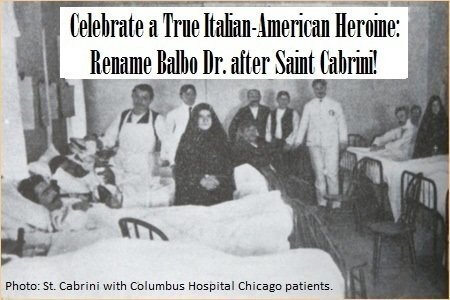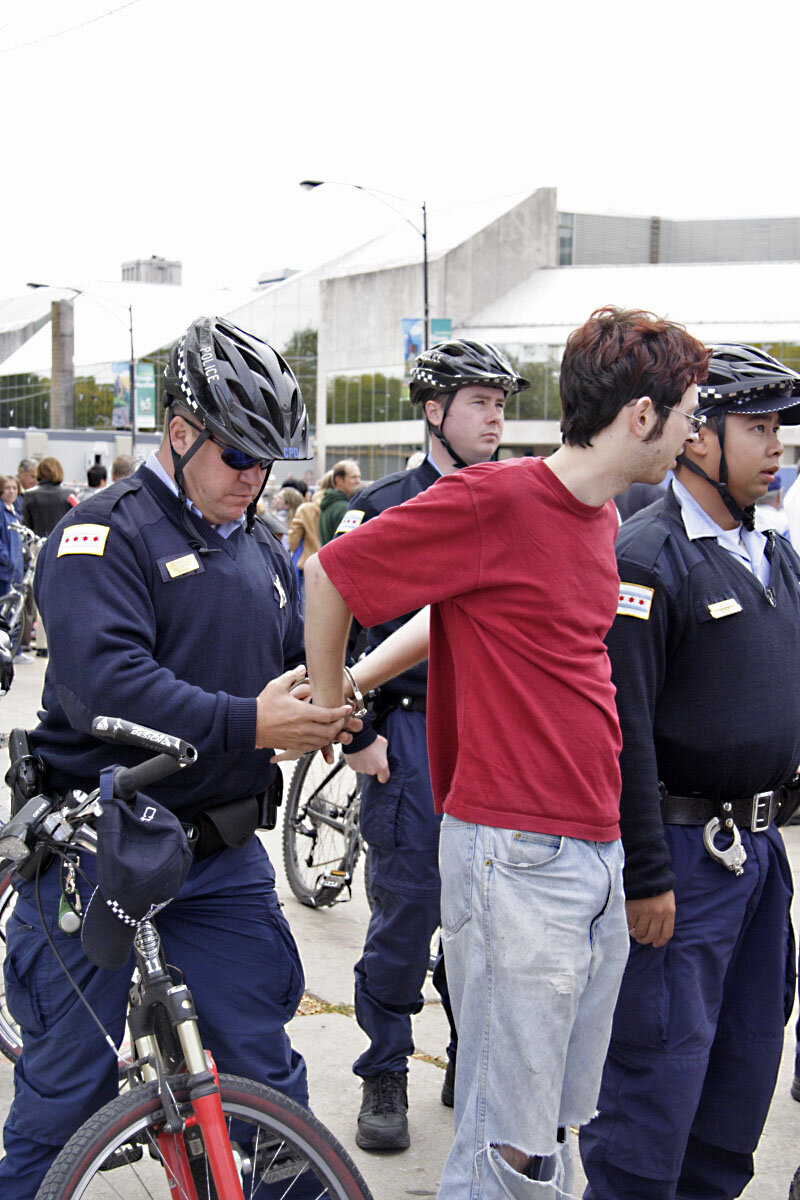Chicago: Remove Balbo and Fascist Monuments
06/23/20
By Matt Muchowski
Revolutionary moments are a rejection of the truism that ‘this is just the way things are.’ We are living through a time when Black Lives Matter protests have swept the country and the world, from gatherings in small towns, to huge marches in big cities. From peaceful protest to burning police buildings and cars–people are standing up and rejecting the idea that they have to accept the way things are.
This rejection includes immediate issues that people face: their lives, their safety, community control of public resources and alternatives to violent policing.
That rejection has also carried over to the myths that sustain ‘the way things are.’ South of the Mason-Dixon line, protesters have physically attacked and torn down dozens of confederate ‘lost cause’ statues and monuments. Mayors and governors are stepping up and ordering racist iconography to be taken down. In Richmond, The United Daughters of the Confederacy, which had played a crucial role in promoting these lies through fundraising for such ahistorical participation trophies, faced reality when its headquarters were burned. General William Tecumseh Sherman, or ‘Uncle Billy,’ as he’s known in anti-confederate meme groups online, would approve.
Chicago has its own brand of racist historical revisionists, who twist the facts in order to defend a World War II-era Italian Fascist.
Who was Balbo?
Italo Balbo was a leader in Mussolini’s Blackshirts. He organized these thugs to violently break up union strikes, and lead Mussolini to power in 1922. In 1923, Blackshirts under Balbo’s command murdered anti-fascist priest Don Giovanni Minzoni.
Flyer distributed by the Italian Socialist Federation and Italian League for the Rights of Man protesting against Balbo’s arrival in Chicago in 1933. From encyclopedia.chicagohistory.org.
Balbo led the Italian airforce–which used chemical weapons to invade Libya and Ethiopia–killing thousands as part of a colonial occupation. Balbo would later be made Governor-General of Libya, where he led efforts to promote Italian settlers by dispossessing Libyans of their land.
As Governor-General of Libya, Balbo enforced Fascist Italy’s anti-Semitic laws, barring Jews from certain jobs, and punishing them for observing the Sabbath.
For the 1933 World’s Fair held in Chicago, Balbo led a propaganda air flight – flying from Italy to Chicago. He was showered with praise by city leaders – given an honorary degree by Loyola University, given a Sioux headdress, and Mayor Kelly renamed 7th Street to Balbo Drive. In return Mussolini donated a Roman column with pro-fascist messages on the base – which still stands today just East of Soldier Field. It is walking distance from the statue of Columbus–whose base also has a plaque donated by Balbo.
Protestors rally in 2017 to demand Chicago stop honoring Balbo in front of the Roman Column given to the city by Fascist Italy. Photo by Ashlee Rezin for the Sun Times.
Myths, not History
Like the alt-right racists who gathered in 2017 to defend the statue of Robert E. Lee in Charlottesville, the revisionists have a lot of historically false things to say about Balbo.
“He was an inspiration to Italian-Americans and to those in aviation.” according to Dominic DiFrisco, president emeritus of the Joint Civic Committee of Italian Americans. John Greenfield of the Chicago Reader paraphrased DiFrisco’s view that “[Balbo’s] arrival in Chicago was an unprecedented source of pride for Italian immigrants, a scientific achievement that belied stereotypes about Italians being technologically backward.”
Frank Di Piero called Balbo’s flight the “proudest moment for Italians in America.”
Don Fiore, former columnist for Fra Noi, described Balbo’s landing as “absolute delirium. ‘Wow! Look at what one of our own did.’”
If we want to learn from history, we can start by rejecting this myth that Balbo was universally beloved by the Italian community at any time.
The trade-unionists in Italy who battled Balbo’s Blackshirts did not admire him. In 1933, the Italian Socialist Federation and the Italian League for the Rights of Man demonstrated against Balbo’s propaganda flight to Chicago by air dropping fliers condemning Balbo.
The fliers read, “It is a disgrace that this murderer and terrorist should be received by Democratic America as the official representative of the Italian people.”
Protesters also replaced the newly-erected Balbo Drive Signs with Don Minzoni Drive signs.
Many Italians and Italian-Americans rejected the fascists, organized and fought against them. We should honor those who knew of fascism’s crimes at the time, and who predicted worse crimes to come.
Much like Confederate propaganda that tried to paint slave-holders in the light of the ‘kindly master,’ Bablo’s revisionists attempt to differentiate him from the Nazis and Mussolini. As Dominic DiFrisco, and Lou Rago, president of the Italian American Human Relations Foundation wrote, “...when Balbo saw where Mussolini was going with his pro-German policies, Balbo was horrified. He was one of the only Fascists in Mussolini's regime to openly oppose Italy's anti-Jewish racial laws and Italy's alliance with Germany.”
Yet, in a 1939 letter to Mussolini, Balbo took credit for ordering the 1936 whipping of Sion Barda and Saul Nhaisi, Jews in Libya who refused fascist orders to work on the Sabbath. “I did not hesitate to order the public flogging of Jews, even those of high social standing, who were guilty of adopting an attitude of passive indifference to certain official measures.”
These revisionists are gaslighting us. One can imagine parallels between a confederate slave master ordering whippings and saying, ‘you made me do this by not working hard enough,’ and Balbo aghast that Jews wouldn’t work on the Sabbath and blaming them for their own floggings.
While Balbo was reluctant to enforce certain anti-Semitic laws, one has to ask why. In the same 1939 Letter to Mussolini, Balbo pushed to delay anti-Semitic laws in Libya, because, “if the Jews suddenly stopped participating in the economy before they could be replaced by a group of Catholic merchant and industrialists, there would be economic imbalances in Libya.”
Balbo did not object to systematically depriving Jews in Libya of their jobs and property. He was only concerned that there needed to be Italian replacements to keep the economy running. One can imagine certain Nazis concerned that there weren’t enough competent Germans to take over Jewish businesses or property.
Image used in a petition from the National Shrine of Saint Frances Xavier Cabrini to Mayor Rahm Emmanuel in 2017.
Always Resisted
There have been several efforts over the decades to rename the street. In 1946, there was a push by the Veterans of Foreign Wars, the Illinois Congress of Parents & Teachers, and more, to rename street after Lt. Com. John Waldron. Waldron was an Italian-American from Chicago who joined the air force, fought in World War II, and died in the battle of Midway. He was portrayed by Glenn Corbett in the 1976 film Midway.
Russell Root, 1947 candidate for mayor, said, “Chicago boys of Italian descent who fought in Italy do not wish to honor the Fascist who betrayed his own people as well as conducted a war against our country.” However, Mayor Kelly believed the revisionist conspiracies about Balbo, and Balbo Drive remained while a street south of Soldier Field was named for Waldron.
In 1983, on the 50th anniversary of Balbo’s flight, Chicago Tribune columnist Vernon Jarrett, the father-in-law to Obama advisor Valerie Jarrett, wrote a column supporting renaming the street. In 1993, Puerto Rican groups were upset that the park district refused a tribute to Dr. Pedro Albizu Campos, while it maintained the column from Balbo. In 2006, Tribune columnist Eric Zorn pointed out that the city was hypocritical to deny Black Panther leader Fred Hampton an honorary street while it had a street named after a fascist. In 2011, a Chicago Tribune editorial suggested Enrico Fermi’s name replace Balbo’s.
The author was handcuffed while demonstrating against Balbo Dr. in 2005. Photos by Gabriel Biller, for chicago.indymedia.org.
I became involved in this struggle after I was handcuffed by CPD for demonstrating at the 2005 Columbus Day Parade. I shouted to Mayor Daley, “Why don’t you rename Balbo Dr. after someone who isn’t a fucking fascist?”
I was handcuffed, processed and given a ticket for misdemeanor disturbing the peace.
In the aftermath of the alt-right rally in Charlottesville in 2017, several online petitions targeted the street and monuments in Chicago. Mayor Rahm Emmanuel said he was “open” to it. There was momentum to rename the street after anti-lynching civil rights activist Ida B. Wells, but the revisionists flexed their political muscle, spread their lies, and Balbo remained, while the bigger, busier Congress Ave. was renamed for Ida B. Wells.
Today, with the uprisings that have rippled out from Minneapolis, we should include this tribute to fascism on the chopping block of racist myths we refuse.
Activists in Bristol, UK, tore down the statue of slavetrader Edward Colston and dumped it in the harbor. Photo by Giulia Spadafora / NurPhoto via Getty Images.
Defund
The call to defund the police and invest in social services has taken center stage. We should keep in mind that the Balbo street name and monuments reflect social relationships that cost the city money, that could go towards developing other relationships with other communities.
The Chicago Department of Transportation maintains street signs, and over the years has had to replace the Balbo street signs as street sign designs change. Black on white. Black on yellow. Today they are white on green. However, per federal guidelines, street signs are being replaced from all capital letters, to a mix of upper and lowercase letter. It can cost $1,200 per intersection for materials and labor to replace a street sign. If the city changes the name now, it can roll the cost of replacing the Balbo signs into upgrading to upper & lower case street signs.
The Chicago Park District maintains the Roman column and the Columbus statue. The column is a piece of antiquity and the park district has asked but budget considerations to protect it from Chicago’s weather and pollution which has damaged it over the years.
In 2016, Park District staff collaborated with revisionist groups on a restoration project for the column. The Park District attempted to fundraise for weather protection, a donor wall, and plaques honoring the revisionist ‘history’ of Balbo’s flight.
Imagine if the time and money for Park District staff was spent developing relationships with Libyan or Ethiopian communities, or pro-labor Italian groups instead.
The author before being handcuffed while demonstrating against Balbo Dr. in 2005. Photos by Gabriel Biller, for chicago.indymedia.org.
What to do
Due to aldermanic prerogative, even if the majority of the city council supports a name change, the alderpeople with the street in their ward can block it. Right now, they feel the pressure from revisionist groups. We need to change their political calculus. You can call Sophia King in the 4th Ward and Brendan Reilly in the 42nd Ward. You can also call the Chicago Park District.
We need to educate community groups: churches, Italian, Ethiopian, Libyan and other ethnic community groups, labor unions, historians, schools, elected officials and more. I made a powerpoint presentation that I’m continuously improving; you can watch and share it here: tinyurl.com/defundbalbo.
I am happy to present it virtually, or in person, when the pandemic subsides.
You can like the Facebook page to organize to take down the Balbo monuments: Chicago Rename Balbo Dr (which is also where sources for this article will be posted.)
I will be using the Freedom of Information Act (FOIA) on the Park District, CDOT, alderpeople’s offices and more to find out how revisionists have pressured them, and how much money has gone into the maintenance of these racist monuments over the years.
People can take creative direct action–put stickers renaming the street on the street signs. Use a digital projector to display Balbo’s anti-semitic messages over the column. Create monuments to anti-fascist activists and place them nearby.
We will be holding a protest at the Column on July 15, the anniversary of Balbo’s landing in Chicago. We will invite the mayor and aldermen to attend and pledge to take down this monument.
Learning From History
In 1983 Vernon Jarrett wrote, “It will indeed be tragic if the City of Chicago and its prestigious museum participate in any way with the Balbo anniversary. Such an association in 1983 would offer nothing more than a shocking demonstration that some in high places refuse to learn from history.”
Describing Americans tearing down a Manhattan statue of King George III after the Declaration of Independence was read, Krystal D’Costa wrote in the Scientific American, “Removing monuments… is as much about the people calling for change as it is about the statues themselves.”
As People’s Historian Howard Zinn said, “You can’t be neutral on a moving train,” and the dedications to Balbo are not value neutral.
The street name and column are a symbol of the mass-murder, racism, and anti-labor politics of the Mussolini regime which Balbo faithfully served.
They cannot be recontextualized as long as the Park District builds relationships with MAGA hat-wearing revisionists like Carlo Vaniglia, the President of the Chicago chapter of the Societa Santa di Cinisi, who essentially say, “there were fine people on both sides,” while discussing literal fascists.
These revisionists and their myths sustain “the way things are.” By honoring Balbo, the city provides a stage for these groups to push their lies and prevent change for a number of issues.
Resources that go towards maintaining the column and staff time spent coordinating with such revisionist groups are money, social capital, and networking that, over the decades, could have gone towards other groups and remembering other historical movements and causes.
Monument to Don Minzoni, the antifascist priest murdered by the Fascist Blackshirts, located in Argenta, Italy.
If we want to truly learn from history, Chicago needs to connect the dots. Who we honor with public funds reflects our values. There needs to be a continual conversation about all the figures the city has streets, statues, buildings and more named after. We’ve seen how other cities are taking down Confederate monuments, and Philadelphia took down a statue of racist mayor Frank Rizzo. Other cities are taking down statues that promote myths about Columbus.
With regards to Balbo–there should be no public commemoration of him.
The street can be renamed after any number of people: Enrico Fermi, the Italian who fled fascism and studied nuclear energy in Chicago; Sacco & Vanzetti, the Italian immigrants who sparked a movement akin to the Black Lives Matter movement today; Don Giovanni Minzoni, the priest murdered by fascist Blackshirts for opposing their violence; St. Frances Xavier Cabrini, who worked to provide housing for Italian immigrants in Chicago; Omar al-Mukhtar, the ‘Lion of the Desert’ who fought against fascist Italy’s invasion of Libya; or Haile Selassie, the Ethiopian emperor who became an anti-fascist symbol during World War II, or so many more figures worth celebrating.
The pro-fascist plaque on the Columbus statue should be removed, and it can be placed in a museum with the Column with the proper, historically accurate, anti-fascist context.
As long as it has proper captioning that does not celebrate, but remembers and informs about how the city has once held space for people like Balbo in its public spaces.
With Chicago: Rename Balbo Dr., Matt Muchowski wishes that the City of Chicago would finally get rid of the homage to an Italian Fascist and instead honor one of many leaders who did better for the city and humanity.









